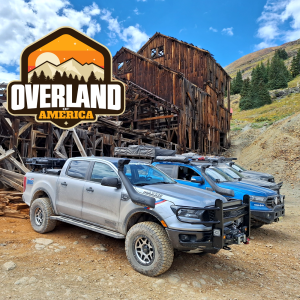Im not at all implying that the B1K is easy, and as I am looking more into this I am more humbled on how much it takes. Thank you Rick for taking the time to realy explain it to me, and all of us here. It sounds like Im not the only one who has a dream like this...
I totally understand your point about jumping into the "major leagues" right away, and I am not be any means saying I can. I guess Im just looking at it because it IS open to everyone, as long as you can cover the cost of things. Im just hoping for a way to enter as the low guy and still make it across the finish, even if I dont have a 50k race truck and a 5 truck chace crew.
Thanks again for your time Rick. Please keep the info comming as Im sure there is much more that we dont know. What about more on the pits and chase trucks? Like how often do you need a pit? And how does the whole chase truck thing work? Is it really like it sounds that another truck really just chases you the whole time? And if so, then why do you need so many to chase?[/QUOTE]
Pits: Generally pits are spaced about 100-125 miles apart for the four wheeled vehicles, half that for motorcyles and quads. Access and strategy plays a BIG role in where you can place pits. Occasionally we have to send a pit crew in down-course which means they're basically stuck for the whole race.....long day.
Sometimes you can use mobile pits but the farther down you get, the harder it gets and they have to carry enough supplies to service their assignments.
Many of us will 'joint-venture' pits on the penisula runs (or even the 500) but remember you obligated to remain until the last competitor (you're pitting for) is through so the mobile pits don't work too well in that case.
Chasing: This is difficult because the chase vehicles are NOT on the course (with some very rare exceptions) which means they have some real challenges accessing the course. The course uses 'roads' that you might ordinarily use to access stops where pits or breakdowns are.
If you look at race course notes or a race map they will sometimes mark chase/pit access. There is no substitute for local knowledge or pre-running.
Because your chase vehicles are not (and shouldn't) traveling at anything approaching race speeds, it can take some time for them to get from one 'visual' to another. (Richard Craniums driving chase trucks too fast have killed others and themselves, including a friend of mine)
We tend to leap-frog chase crews (I try to use a triple rotation) so they can get to the next visual and/or pit before the race car. Bear in mind these are usually very heavily loaded street vehicles. The most common is a crew-cab 4WD with a 'chase-rack' holding tires, and a bed full of tools, spares, consumables, nitrogen bottles, jacks, generators, welders and fuel.
I try to have at least three in a chase crew and one needs to be a very good wrench.
A big 'monkey-wrench is that the race usually snakes back and forth between the Gulf and the Pacific side so the next big problem is getting crews from one side to the other. Many areas in Baja do not have very direct access across the peninsula.
Grab a AAA map of Baja (easily the best readily available) and you'll see what I mean. Remember, maps are ink on paper; some of the 'roads' are VERY challenging.
Comms is always a challenge. The 2 meter radios we use work pretty well with the mag-mount antennae but if there are mountains, etc. you can lose touch pretty easy. Renting satellite phones becomes pretty important for key people. We communicate via text whenever possible to cover the whole crew and because its way cheaper.
Speaking of comms: some of what I've described may sound pretty 'full-race' compared to what you've got in mind but its not just about the race effort, its also about the safety of your crew and the rest of the competitors. Stuff happens.
You can circumvent many of the pit issues by using a pit service (most do) but you should plan on having a chase crew at the pit when the race car arrives. The folks at the pit stops will go above and beyond to help repair your race car but they probably won't have much in the way of parts and may not be familiar with your race car.
There is a LOT that goes into a sucessful pit stop, you will get their best effort but it will be a pretty generic stop, for obvious reasons. Remember, these are unpaid volunteers, usually sacrificing vacation time to support your racing habit.
I'm tired again.













